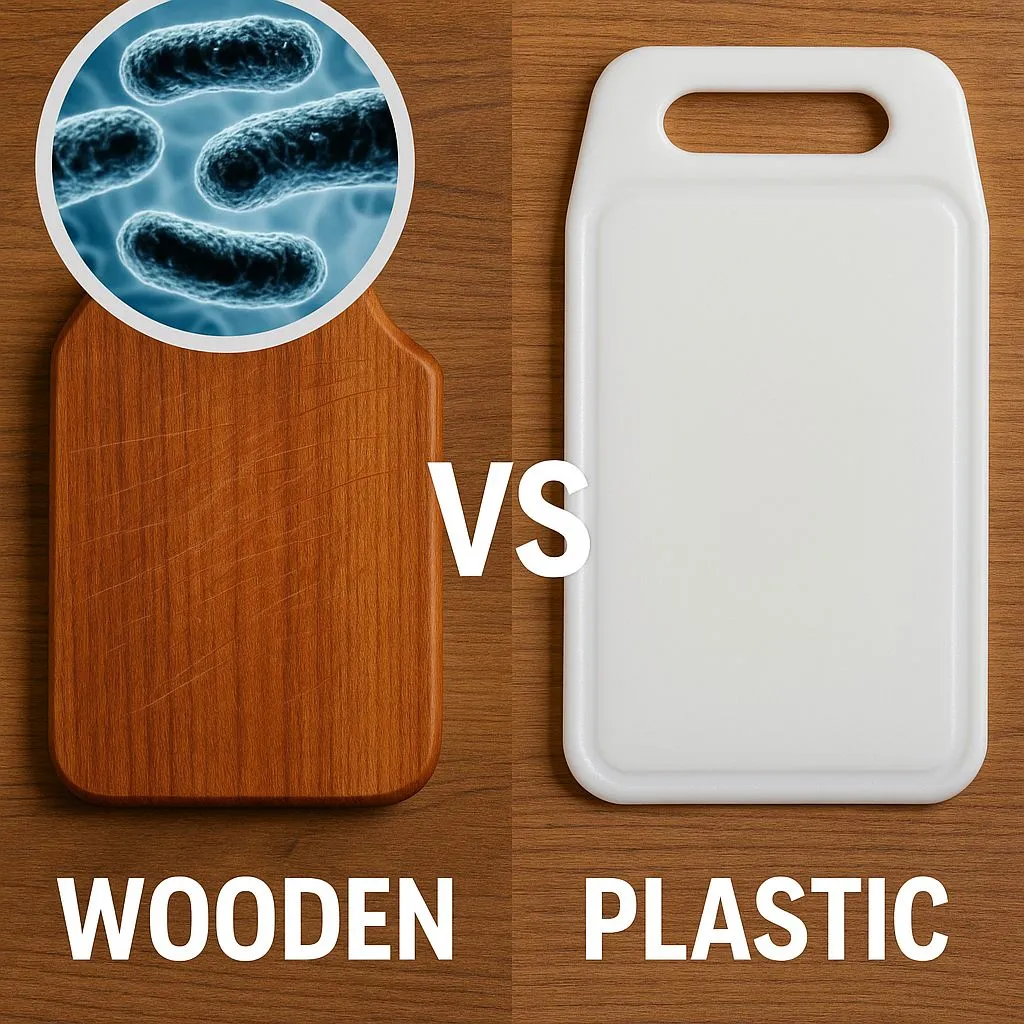Nutrition et santé
Les planches en bois sont plus hygiéniques que celles en plastique
Le post
Voir sur
Wooden vs. Plastic Cutting Boards: Which Is Safer?
A study comparing plastic and wooden cutting boards found surprising results. Bacteria like E. coli, Listeria, and Salmonella survived longer and even multiplied on plastic boards, especially when left overnight. In contrast, wooden boards absorbed the bacteria-containing fluids within minutes. If the contamination level was typical of raw meat, bacteria were rarely recoverable from wood. Even with heavy contamination, bacterial survival dropped by over 98% after 12 hours. The study concluded that, contrary to popular belief, wooden cutting boards may actually be more sanitary than plastic, offering better protection against cross-contamination in home kitchens.
#foodsafety
https://lnkd.in/eQ7Bzm8W

Le débunk
✅ Mostly true
Back in 1994, Professor Dean Cliver found that bacteria tended to survive for a shorter time on wooden chopping boards than on plastic ones. Wood seems to absorb bacteria, which then struggle to multiply. As a naturally antibacterial material, wood was therefore seen as a safer option.
That said, the study was carried out under highly controlled lab conditions, a far cry from the typical hustle and bustle of a home kitchen, where scratches, food juices and variable cleaning habits come into play.
https://tinyurl.com/3hb2h56j
https://tinyurl.com/45ruv7ds
It's true that food residues can get lodged in tiny cracks on plastic boards if they’re not cleaned properly. But according to a 2016 meta-analysis, after a thorough wash, bacterial levels on plastic and wood are quite similar.
https://tinyurl.com/4napb5bv
❗ Plastic boards, however, shed microplastics; potentially up to 50 grams a year. The long-term impact on human health remains unclear, but studies on animals have shown effects on gut microbiota and chronic inflammation.
https://tinyurl.com/t3rb8nck
Conclusion: When it comes to bacteria, proper cleaning is what really matters. But in broader terms, it’s wiser to opt for natural materials over plastic.
Antibacterial effect of wood proven
It is often recommended in the Kitchen ABC, and many people do it: for reasons of hygiene, different chopping boards should be used in the kitchen for fruit and vegetables and for meat. This measure is intended to prevent harmful bacteria and germs,...
En fr :
✅ Plutôt vrai
En 1994, le professeur Dean Cliver a montré que des bactéries survivaient moins longtemps sur des planches en bois qu'en plastique. Le bois absorberait les bactéries, les empêchant de se développer. Antibactérien naturel, il serait donc sûr.
Cependant, elle a été menée dans un cadre très contrôlé, loin des conditions réelles d'une cuisine (rayures, absorption des jus, entretien variable, etc.).
https://tinyurl.com/3hb2h56j
https://tinyurl.com/45ruv7ds
Certes, des résidus alimentaires peuvent s'insinuer dans les microfissures d'une planche en plastique si celle-ci n'est pas correctement lavée, mais selon une méta-analyse de 2016, après un bon nettoyage, les charges bactériennes sont comparables entre plastique et bois.
https://tinyurl.com/4napb5bv
❗ les planches en plastique libèrent des microplastiques, jusqu'à 50 g par an. Les effets à long terme sur la santé humaine sont encore mal connus, mais des impacts sur le microbiote intestinal et l'inflammation chronique ont été observés chez les animaux.
https://tinyurl.com/t3rb8nck
Conclusion : face aux bactéries, le plus important est le nettoyage, mais de façon plus large, mieux vaut un matériau naturel que du plastique.
Vous avez une question, une remarque ou une suggestion ? Contactez-nous en en indiquant le titre du débunk. Nous vous répondrons au plus vite !
Contactez-nous
